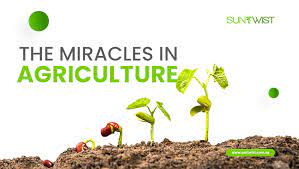Trends in Agriculture to watch

Here are 15 trends in agriculture to watch: Sustainable Agriculture: There is an increasing focus on sustainable farming practices that reduce the environmental impact of agriculture and preserve natural resources . Digital Farming : The use of digital technologies such as precision farming, data analytics, and IoT sensors to optimize crop yields and improve resource management. Urban Agriculture : The trend towards growing food in urban areas, including rooftop gardens, community gardens, and hydroponics. Vertical Farming: The use of vertically stacked layers of crops in controlled environments, such as indoor warehouses or greenhouses, to increase yields and reduce land use. Organic Farming : The demand for organic food products continues to grow, driving the expansion of organic farming practices. Robotics and Automation : The use of robotics and automation to streamline farming operations and reduce labor costs. Plant-Based Proteins: The growing demand for plant-based protein sou...



